Top 12 Backup And Recovery Vendors: Gartner’s Magic Quadrant
Commvault, Cohesity, Dell EMC and Veeam are just some of the vendors that led Gartner’s new 2019 Magic Quadrant for Data Center Backup and Recovery Solutions.

The Top 12 Leader Data Center Backup And Recovery Vendors
The data center backup and recovery market is rapidly changing as customers are demanding simpler, more agile and cost-optimized solutions, according to Gartner’s 2019 Magic Quadrant for Data Center Backup and Recovery Solutions.
By 2022, 40 percent of organizations will replace their backup applications from what they deployed as early as 2018, according to the IT research firm. Larger vendors are no longer viewed as being safe choices, said Gartner, as customers are willing to deploy multiple backup solutions to best match the needs of what is being protected.
With the massive growth in data, new applications and deployment models are growing. Ease of deployment, instant recovery and greater ease for administrators are key requirements in the market today. The backup and recovery market is consolidating features such as data replication, cloud disaster recovery automation and orchestration, and intercloud data mobility into a single platform.
Here are the 12 market-leading vendors in the space that made Gartner's 2019 Data Center Backup and Recovery Solutions Magic Quadrant, along with assessments of each company's strengths and weaknesses in the space.

Gartner’s Data Center Backup And Recovery Methodology
Gartner defines data center backup and recovery solutions as products designed to capture a point-in-time copy across heterogeneous enterprise workloads, the ability to find and restore specific datasets to the original or alternative system, and the ability to write the data out to a secondary device such as tape, hard-disk drives, solid-state drives or to cloud services.
Gartner’s Magic Quadrant for Data Center Backup and Recovery Solutions focuses on the upper-midmarket and large enterprise organizations.
This Magic Quadrant ranks vendors on their ability to execute and completeness of vision and places them in four categories: Niche Players (low on vision and execution), Visionaries (good vision but low execution), Challengers (good execution but low vision) and Leaders (excelling in both vision and execution). On this particular Magic Quadrant, there were no companies that made the Challenger category.
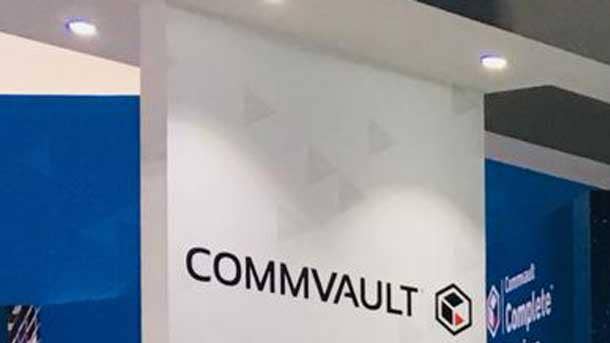
Leader: Commvault
Commvault won the gold medal in execution on the Magic Quadrant, besting the 11 other vendors, while also ranking third in vision. The Tinton Falls, N.J.-based company’s Commvault Complete Backup and Recovery is a highly scalable platform based on a traditional three-tier architecture of agents, media servers and a management server. The solution consolidates backup, recovery, archiving, disaster recovery (DR), cloud integration and cloud backup functionality into a single offering based on a single software stack. Commvault has changed its pricing model where customers now select licensing based on front-end capacity, number of VMs, physical CPUs or instances being protected in either a subscription-based or traditional purchasing model.
Commvault is often selected by enterprises that favor its strong data protection management functions, hardware snapshot management functions, and cloud integration and protection capabilities.
Strength: Commvault Complete Backup and Recovery is the most comprehensive integrated product in the industry, according to Gartner, supporting a broad range of operating systems, hypervisors, applications, storage arrays and public cloud providers.
Weakness: Despite recent improvements in user interface and design, Gartner clients report challenges with product complexity and setup configuration.

Leader: Veeam
Veeam took the silver medal in execution on the Magic Quadrant and ranks among the middle of the pack in vision. Founded in 2006, the Switzerland-based data protection software specialist is adopted by midmarket and enterprise customers focusing on backing up virtualized environments. Veeam Availability Suite includes Veeam Backup & Replication, Veeam Agents for servers and workstations, Backup & Replication for AWS and Veeam ONE. Veeam Backup & Replication software is available as a free community edition, a standard edition, and an enterprise and enterprise plus edition, where the difference lies in the number of supported options. Veeam is completely delivered via the channel and has a very large service provider network offering a hybrid extension for data center services.
Veeam’s most popular use case is the backup of virtual machines, while its installed base for heterogeneous support with Veeam Agents is growing significantly.
Strength: Veeam is helping customers transition to the cloud by offering compelling hybrid cloud backup and cloud-native backup for AWS environments.
Weakness: Delays in support for NAS backup has forced customers to continue to use other backup vendor software alongside Veeam.
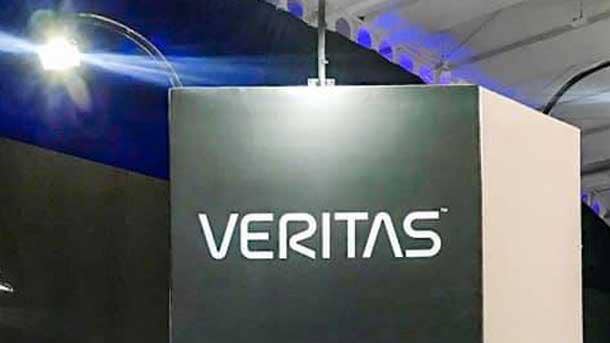
Leader: Veritas Technologies
The Santa Clara, Calif.-based data management company won third place in execution and fourth place in vision on the Magic Quadrant. Veritas Technologies’ NetBackup has been the market leader for revenue in backup and recovery market for more than a decade, and includes a broad set of functionality and protection for traditional applications. Founded in 1983, Vertias Technologies was purchased by Symantec in 2004 and then sold to global investment firm The Carlyle Group in 2016. Veritas has a broad portfolio including backup and recovery, business continuity, information governance, software-defined storage and multicloud data management. Veritas delivers NetBackup both as a software-only offering that can be deployed on a customer’s own hardware, as well as an integrated scale-up appliance that runs the backup software and stores backup data.
NetBackup is a proven product in the most demanding environments, which is why its favored by large organizations with a complex mix of legacy, traditional and modern applications.
Strength: NetBackup has proven scale, with several customers deploying multiple petabytes and more than 1,000 clients in a single environment.
Weakness: Veritas appliances scale in storage capacity and not compute, requiring additional data movers for better performance in larger environments.
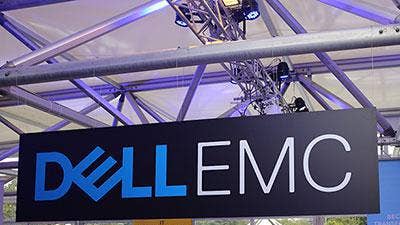
Leader: Dell EMC
The worldwide storage market leader placed fourth in execution and among the middle of the pack in vision on the Magic Quadrant. Dell EMC’s backup portfolio, which is part of Dell Technologies, mainly consists of Data Protection Suite (DPS) that includes nine different point solution and its Integrated Protection Appliance family. The company launched its DP4400 converged, integrated data protection appliance offering backup, deduplication, replication and recovery. Dell EMC’s Avamar and NetWorker can be deployed as stand-alone products or in conjunction with Data Domain appliances. Both solutions protect on-premises physical and virtual environments as well as tier backup data to the public cloud. Avamar, NetWorker and Data Domain are also available as virtual editions that can be installed in AWS and Microsoft Azure.
DPS is commonly purchased in combination with Data Domain in large on-premises environments that include physical systems and virtual machines.
Strength: Dell EMC provides granular and application-consistent backup and recovery for SAP HANA. The company also has strong influence in emerging markets thanks to its channel partners.
Weakness: Gartner says existing DPS and Data Domain customers express dissatisfaction regarding high annual maintenance fees.
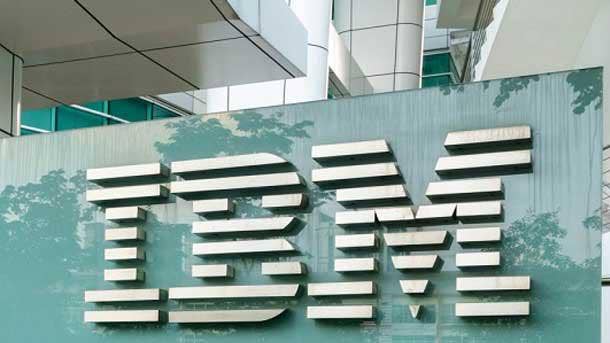
Leader: IBM
IBM, which acquired Red Hat this year for $34 billion, placed fifth in execution and among the middle of the pack in vision on the Magic Quadrant. The Armonk, N.Y.-based technology giant’s Spectrum Protect Suite is a collection of multiple products to handle the data protection, hardware snapshot, and archiving needs for customers including physical, virtual, application, and database workloads. IBM’s products are Spectrum Protect, Spectrum Protect Snapshot and Spectrum Protect Plus. Spectrum Protect Plus focuses on ease of use, self-service, data reuse, agentless architecture, role-based access control, automation and low cost for virtual environments only. Protect Plus is agentless and can be installed in a VMware or Hyper-V environments.
The popular Spectrum Protect uses cases include Linux, AIX, Windows, VMware, Hyper-V, Db2, Oracle, SQL Server, Exchange Server and Spectrum Scale.
Strength: Spectrum Protect Suite is priced as per-backend-TB which is consumed irrespective of application and data type that significantly reducing licensing costs.
Weakness: Protect Plus can only be installed as a virtual appliance, which creates a dependency on the virtualization platform for availability and requires additional hypervisor CPU licenses.
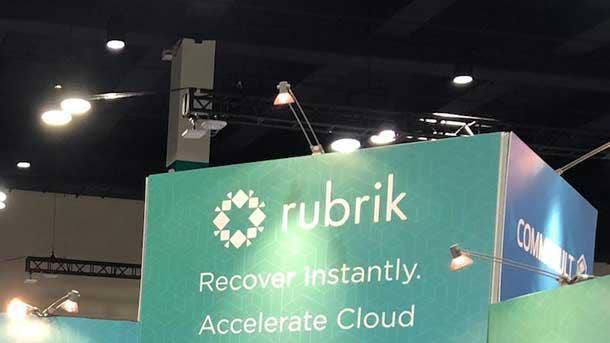
Visionary: Rubrik
Rubrik’s innovation engine has been on fire, taking home the gold in vision on the Magic Quadrant. Founded in 2014, the Palo Alto, Calif.-based company was among the middle of the pack in execution on the quadrant. Rubrik focuses on data protection and management in hybrid IT environments with its Rubrik Cloud Data Management (RCDM), a scale-out-architecture-based data protection solution with cloud integration. Rubrik’s Polaris is a SaaS-based data management platform. Polaris GPS is a tool that facilitates centralized policy management and reporting, while Polaris Radar provides ransomware detection and remediation. RCDM software can be deployed via hardware from Rubrik, Cisco, HPE or Dell, as well as a virtual appliance for edge use cases or cloud cluster-based deployments.
Rubrik is most commonly deployed by customers to protect highly virtualized on-premises environments and hybrid environments that leverage AWS and Microsoft Azure.
Strength: Rubrik customers have reported a high level of product satisfaction, consistently highlighting aspects such as deployment simplicity and simplification of daily operations.
Weakness: Protecting virtual machines and applications in public cloud is cost-prohibitive for small and midsize deployments as it requires a minimum four-node RCDM cluster.
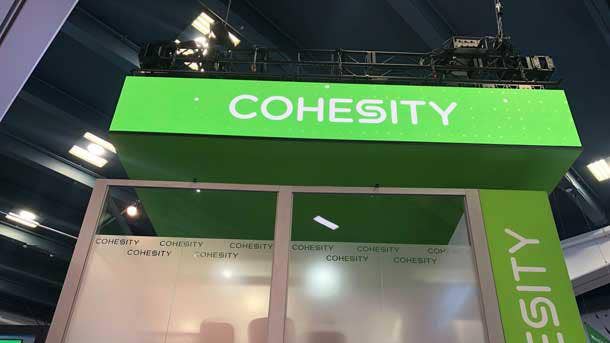
Visionary: Cohesity
New to Gartner’s Data Center Backup and Recovery Solutions Magic Quadrant this year is Cohesity, which ranks No. 2 in vision and among the bottom half of the pack in execution. The San Jose, Calif.-based company focuses on the consolidation of secondary data with cloud integration. Cohesity’s product is an integrated offering that includes a backup application running on a scale-out file system. It employs a cluster-like design that starts with a minimum of three nodes and scales in capacity and performance by adding nodes to the cluster. Cohesity stores the backup data in application-native formats and exports file-based data over network-attached storage (NAS) protocols.
Cohesity’s primary use case is the backup of standard enterprise applications and virtual machine (VM) infrastructures. The company also exports the backup data in native formats to enable test and development, disaster recovery and analytics by serving data directly from its appliances.
Strength: Instant mass restore features provide the ability to restore several VMs within a short period, significantly reducing recovery time objectives.
Weakness: Support for granular recovery of Microsoft Exchange and SharePoint, and IBM iSeries backup requires add-on software and is charged separately.
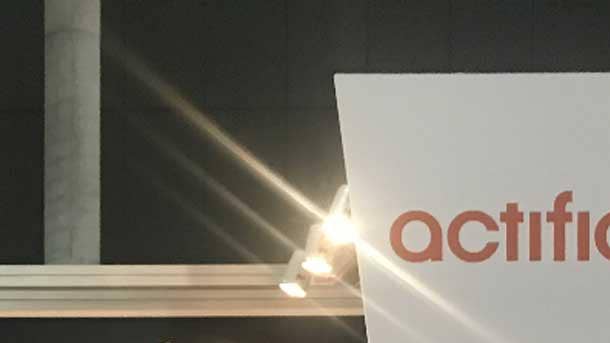
Visionary: Actifio
Actifio ranks among the top of the pack in vision and among the bottom in execution on the Magic Quadrant. The Waltham, Mass.-based company delivers copy data management software independent of hardware as a foundation for creating virtual copies of data that can be leveraged for backup and recovery. The company’s Virtual Data Pipeline (VDP) creates virtual copies of application data for physical machines, VMs, cloud-based data or cloud apps using agentless or agent-assisted technology supported for many platforms and enterprise applications technology. Actifio delivers a separate disaster recovery orchestration tool and supports data and hypervisor migration between VMware, Azure, AWS and Google Cloud.
Actifiio’s most popular use case is for supporting database backups, either physical or virtual, while its disaster recovery capabilities are also important to customers.
Strength: Actifio’s technology is particularly effective for protection and recovery of large enterprise-class databases.
Weakness: Despite being a decade old and having a competitive product portfolio, Actifio remains a small organization with limited mind share in the enterprise.
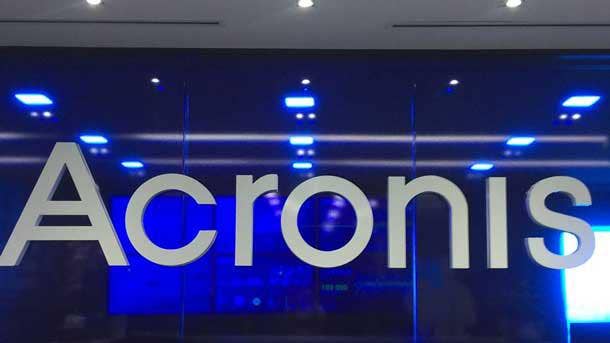
Niche Player: Acronis
New to the Magic Quadrant this year is Acronis, which recently raised $147 million from Goldman Sachs. Founded in 2003, the company ranks among the bottom of the pack in terms of both vision and execution on the Magic Quadrant. Acronis develops backup, anti-malware, disaster recovery, storage and enterprise file synchronization and sharing solutions (EFSS), with a focus on cybersecurity, protection and recovery. Acronis provides a suite of products on the same codebase, with Acronis Backup as the core product for the data center; Acronis Cyber Cloud for service providers; and Acronis Cyber Infrastructure that can be used as a backup target.
Acronis Backup customers range from small to midsize data centers with a focus on the automotive, sports, oil and gas, and entertainment services industries.
Strength: Acronis Backup is a value-priced solution that has a specific focus on security and can address various use cases for backup and recovery of cloud-based data, remote offices, endpoints, and data center workloads with instant restore capabilities.
Weakness: The company has no support for in-memory databases such as SAP HANA and limited support for modern NoSQL databases such MongoDB and Cassandra.
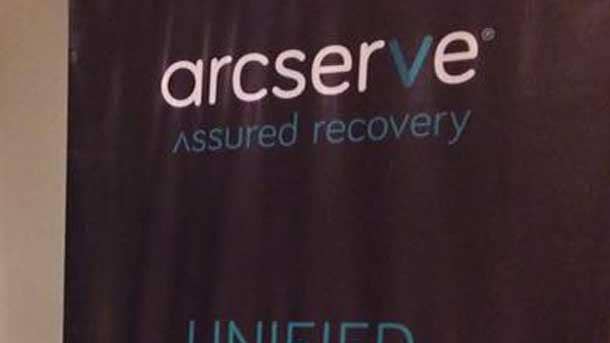
Niche Player: Arcserve
Arcserve has been serving the data protection market for more than three decades and has a broad portfolio of products to protect data both on-premises and in the cloud, with customers across all regions including a large presence in Japan. The Eden Prairie, Minn.-based company ranks among the bottom of the pack in both vision and execution on the Magic Quadrant. Arcserve’s backup portfolio includes Arcserve Unified Data Protection (UDP); Arcserve Replication and High Availability for continuous data protection; Arcserve Backup for tape support; and Arcserve UDP Cloud Direct and UDP Cloud Hybrid for cloud-based backup, off-site retention and DR. The company also offers appliances to deliver both backup and disaster recovery.
Arcserve is preferred by midsize enterprises that need a storage-efficient solution to protect physical servers running traditional applications and virtual machines.
Strength: Arcserve UDP has comprehensive support for Microsoft Azure, AWS and Azure Stack backup/recovery use cases.
Weakness: UDP offers limited functionality for ransomware reporting and remediation. The company also has limited mind share in large enterprises.
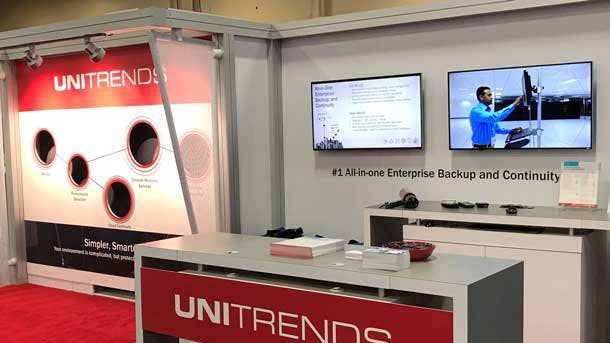
Niche Player: Unitrends
Acquired by Kaseya in 2018, Unitrends offers management solutions for managed service providers (MSPs) and internal IT organizations with a focus on data protection solutions for SMBs and upper-midmarket enterprises. Unitrends ranks among the bottom of the pack in both vision and execution on the Magic Quadrant. Unitrends Backup consolidates backup, replication, deduplication and disaster recovery into a single solution. It is available as an easy-to-deploy integrated appliance or as a virtual machine that can be deployed in the cloud or on customers’ own hardware. New features include Nutanix AHV integration and predictive-analytics-based ransomware detection.
Unitrends is preferred by enterprises with limited staff due to its all-in-one solution for both data protection and disaster recovery, delivered in an easy-to-deploy appliance.
Strength: The company’s backup software and appliances support all major cloud providers — AWS S3/S3 Standard-Infrequent Access, Microsoft Azure Blob Storage and Google Cloud Storage — as a backup target.
Weakness: Unitrends Backup software and appliances do not support granular table-level recovery of relational databases or object-level recovery of Active Directory systems.
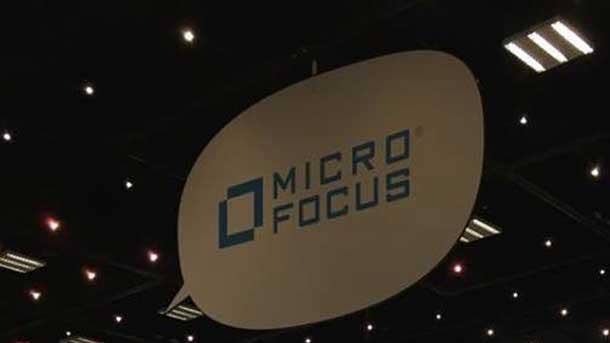
Niche Player: Micro Focus
Micro Focus was added to Gartner’s Magic Quadrant this year after it purchased HPE’s backup product, Data Protector. The U.K.-based company placed last in both vision and execution on the Magic Quadrant. Data Protector is well positioned for protecting physical and virtual environments and Micro Focus continues to make enhancements to Data Protector, including support for Amazon S3 as a backup target destination. Data Protector provides deep integration with SAP and SAP HANA environments, protecting both system and tenant databases in stand-alone and cluster SAP systems.
Data Protector is used mainly in physical environments protecting mission-critical databases and business applications. Data Protector is often bundled with HPE StoreOnce, which is used as a backup target.
Strength: Data Protector provides rich monitoring and analytics capabilities that simplify capacity management and ensure backup performance SLAs are met.
Weakness: Micro Focus continues to rebuild its channel partner relationships. Based on customer interactions, Gartner said this has resulted in below-average customer experience as channel partners switch to competitive solutions.